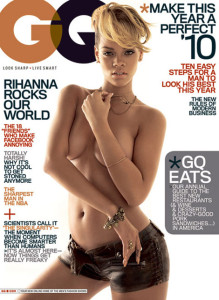 In an article for Masthead Online, Kat Tancock, web and communities editor at Best Health, discusses how some publishers are finding success by developing iPhone apps for their magazines. Some of the more successful ones include magazine spin-offs from publisher Rodale, such as:
In an article for Masthead Online, Kat Tancock, web and communities editor at Best Health, discusses how some publishers are finding success by developing iPhone apps for their magazines. Some of the more successful ones include magazine spin-offs from publisher Rodale, such as:
- Eat This, Not That, a food guide spin-off of both the book of the same name and Men’s Health magazine;
- Personal workout trainers from Men’s Health and Women’s Health (Rodale);
- A Runner’s World shoe guide (Rodale).
Other publishers, such as Condé Nast, are finding success by offering mobile versions of their print content. The December and January issues of GQ were offered as a $2.99 app per issue. December’s issue sold approximately 6,600 copies, while January’s issue sold upwards of 12,000, for $40,000 total revenue in January alone. (The publisher plans to offer repeat customers a price of $1.99 per download for future issues.)
Condé Nast made significantly more than $40,000 when you factor in advertising revenue, however, which is the source of most of magazines’ profits anyway. Laurie Burkitt, staff writer for the Forbes CMO Network, talks about mobile advertising on Forbes‘ The Biz Blog. Burkitt predicts that more publishers, including Condé Nast, will be pushing more of their content to mobile phones and tablet devices, “because marketers are willing to pay more when they know they’ll be the only advertiser on the page and when they can get loads of analytics that come from the phone.”
Peter Kafka, a media and technology analyst who writes for the MediaMemo blog at All Things Digital, agrees with Condé Nast that its iPhone apps were a success:
[E]nough for Condé to declare the digital magazines, designed to be consumed on iPhones and iPods, a ‘success out of the gate.’ For now, that seems plausible for two reasons.
For starters, this is a Big Media digital product that doesn’t cut into the existing analog offering. The company isn’t exactly sure whether digital buyers cannibalized print numbers, but its hunch is that they did not, and that seems right to me.
Second, it doesn’t matter from a financial perspective. That’s because Condé has convinced advertisers to credit both sales equally. And selling digital copies via iTunes is much more lucrative than spending money to print and distribute paper copies.
Tancock’s review of the GQ app is not particularly favorable, but she thinks the kinks could be worked out if publishers opt for a more text-heavy app rather than trying to accomplish a faithful duplication of their print versions. A larger screen area to work with, such as on Apple’s forthcoming iPad or on other tablet devices, would also help matters. Stephanie Clifford of The New York Times’ Media Decoder blog reports:
Condé Nast plans to have some magazines tablet-ready when the iPad ships — at least a version of the GQ iPhone app, but at best full iPad versions of multiple magazines. [Sarah Chubb, president of Condé Nast Digital] declined to specify what magazines would first make the jump, but said that Vanity Fair, Wired and GQ are likely candidates.
Clifford also reports that Time Inc. is preparing tablet versions of all of its United States titles. The publisher has already created a tablet mockup of Sports Illustrated.
SOURCE: “Why Conde Nast Can Claim Mission Accomplished,” The Biz Blog, 01/21/10
SOURCE: “Review: GQ’s iPhone app,” Masthead Online, 01/15/10
SOURCE: “With an Eye on the iPad, Condé Nast Declares Its $39,000 iPhone Magazine a ‘Success’,” MediaMemo, 01/21/10
SOURCE: “Condé Nast and Time Inc. Cheer iPad; Others Have Doubts,” Media Decoder, 01/27/10
Image: Cover of GQ, January 2010/Fair Use: Reporting.